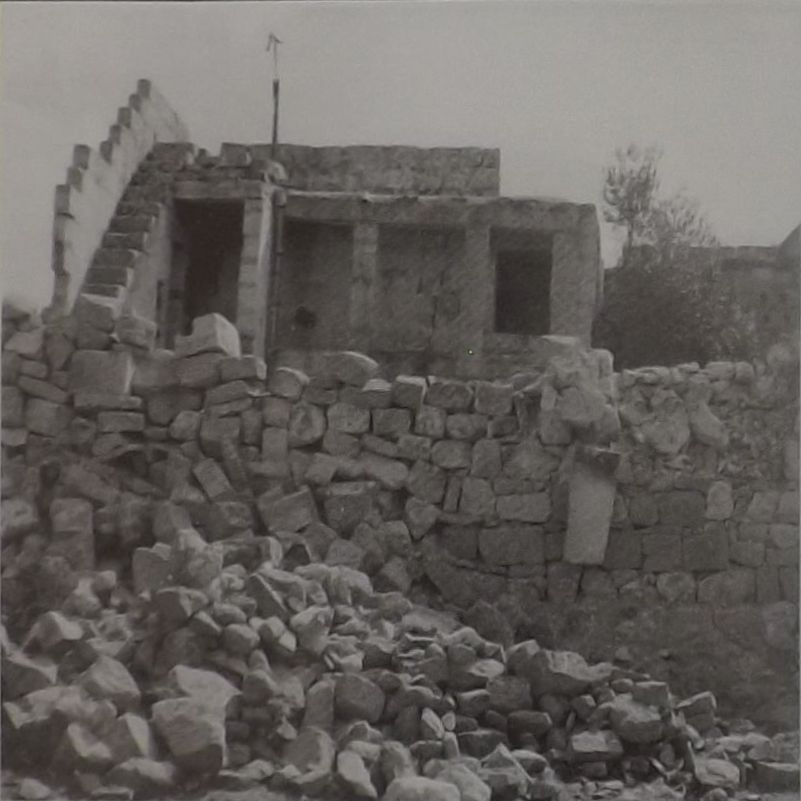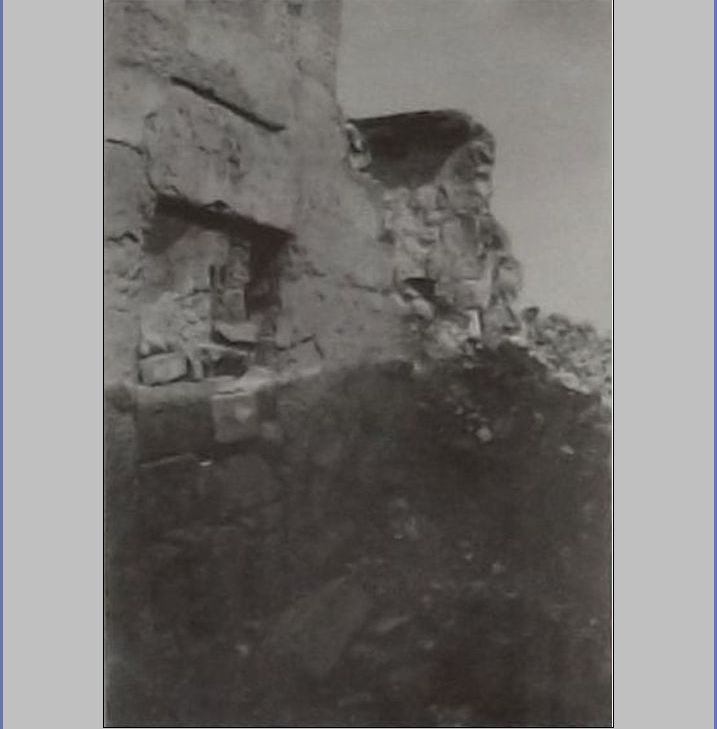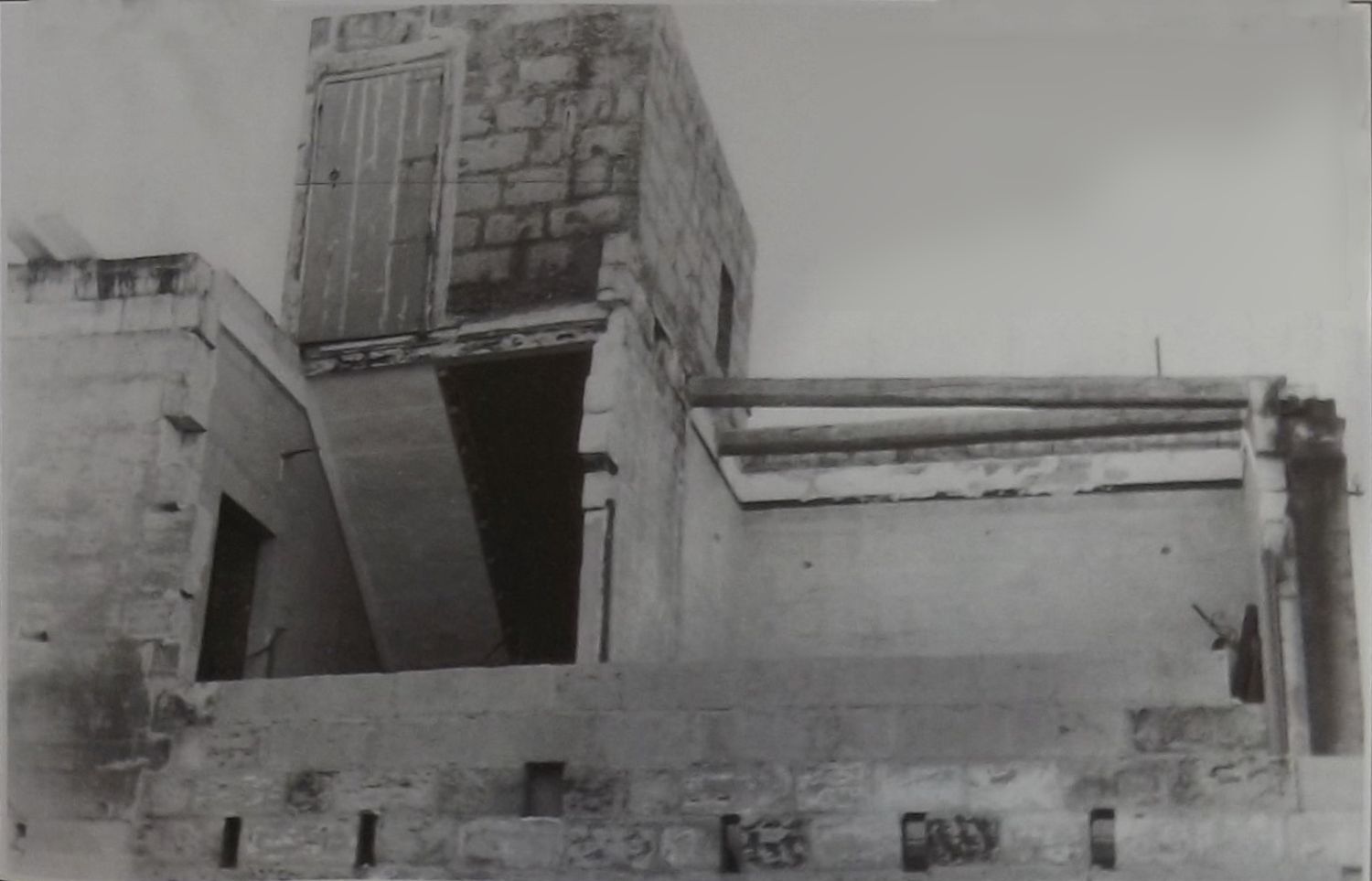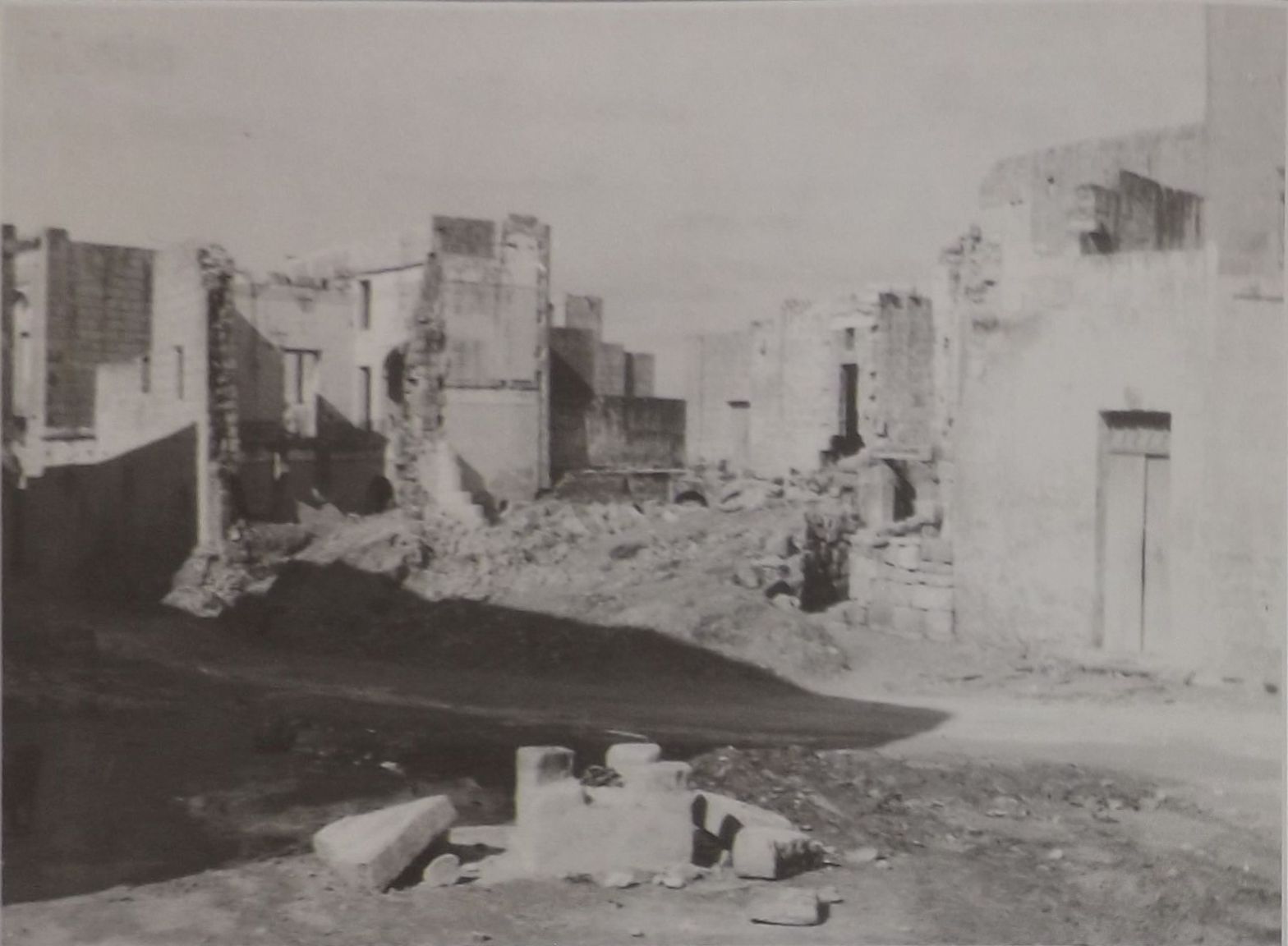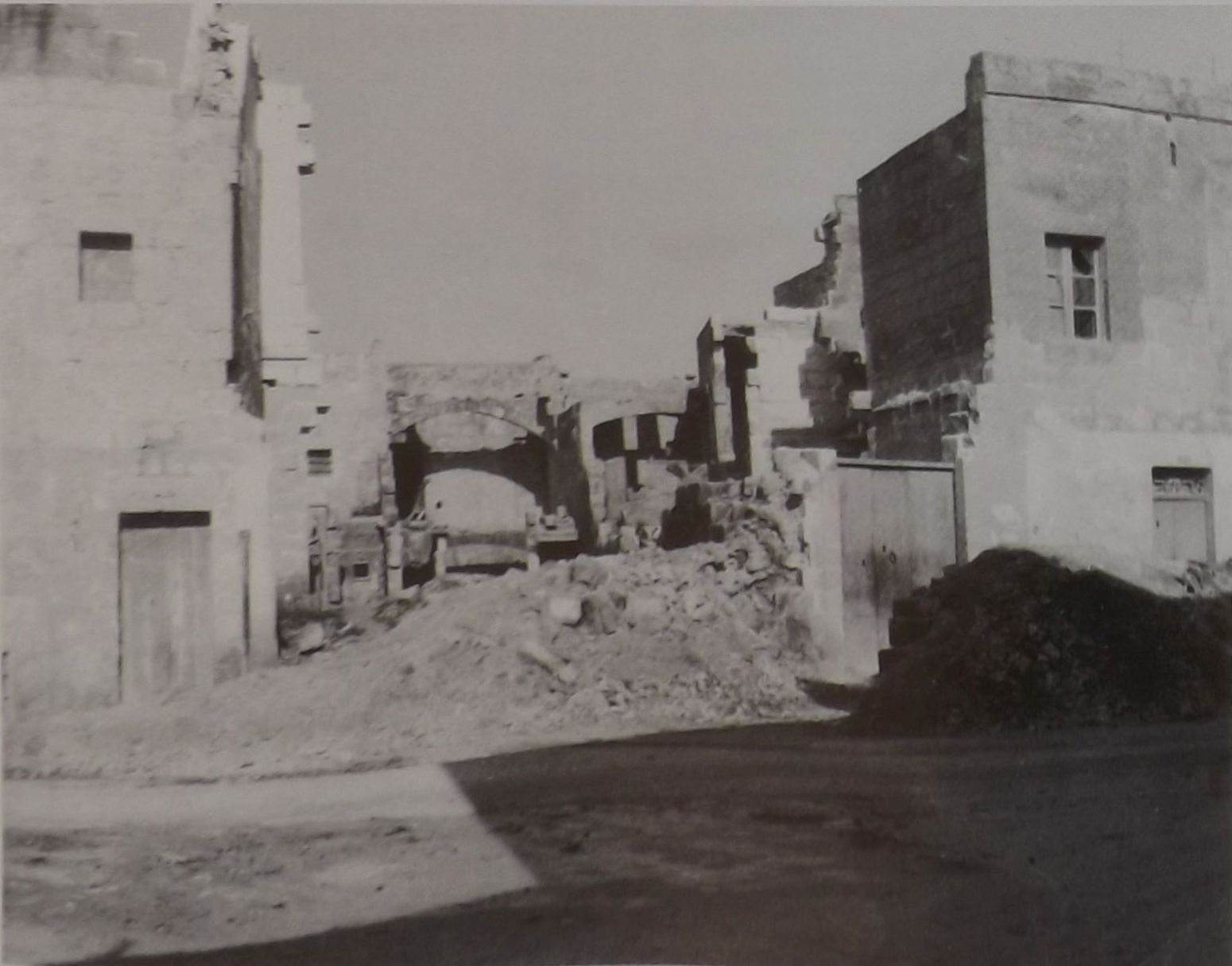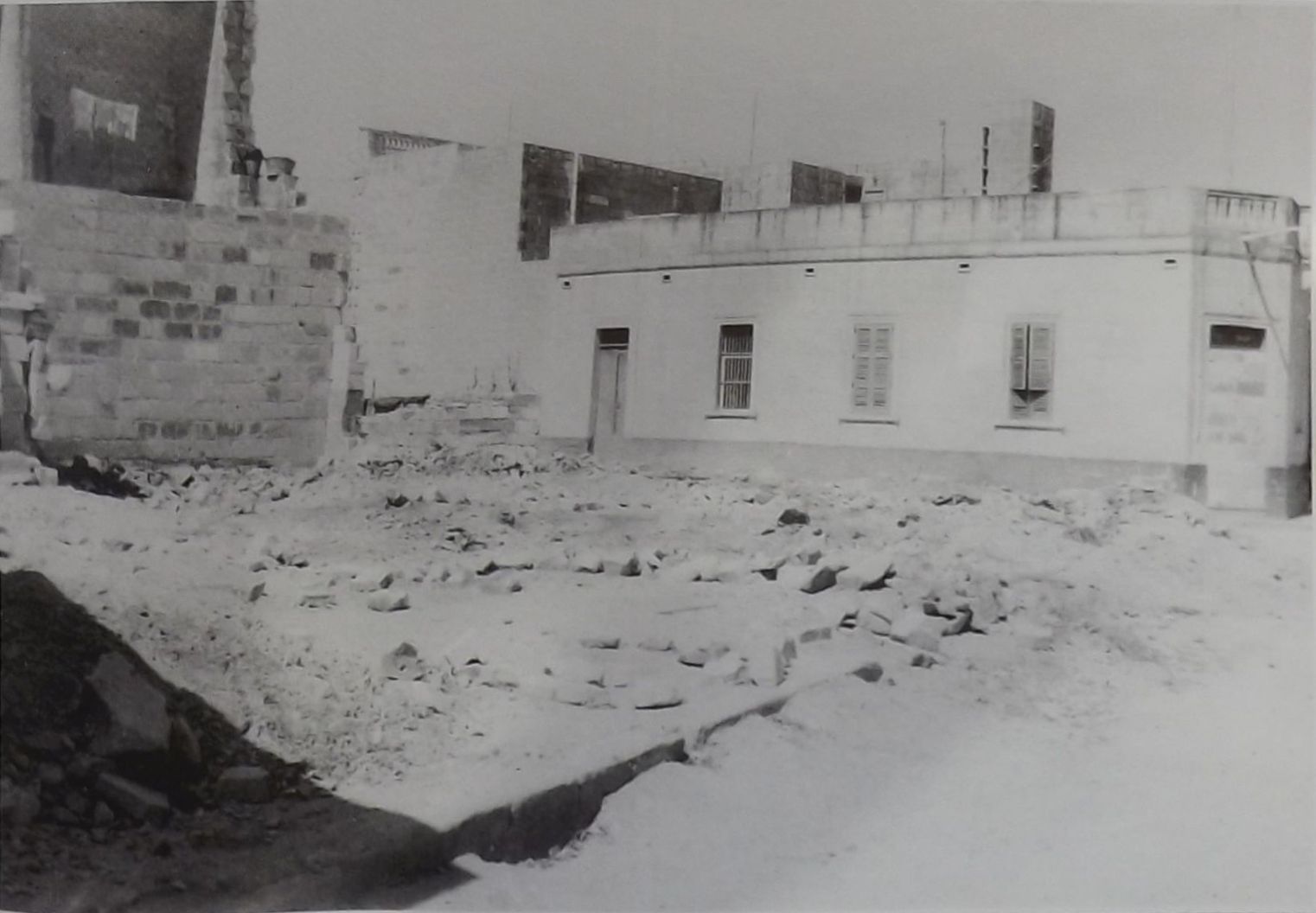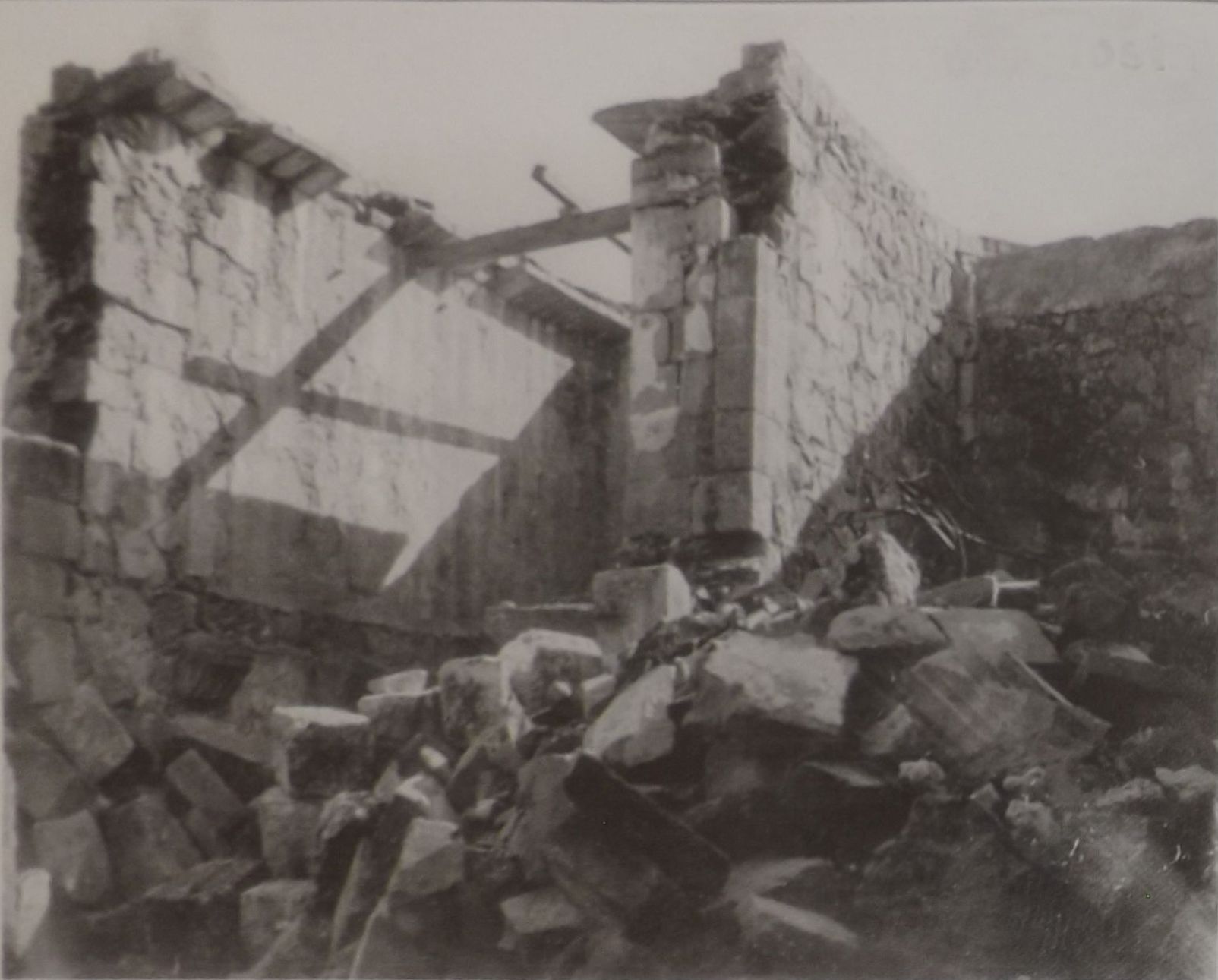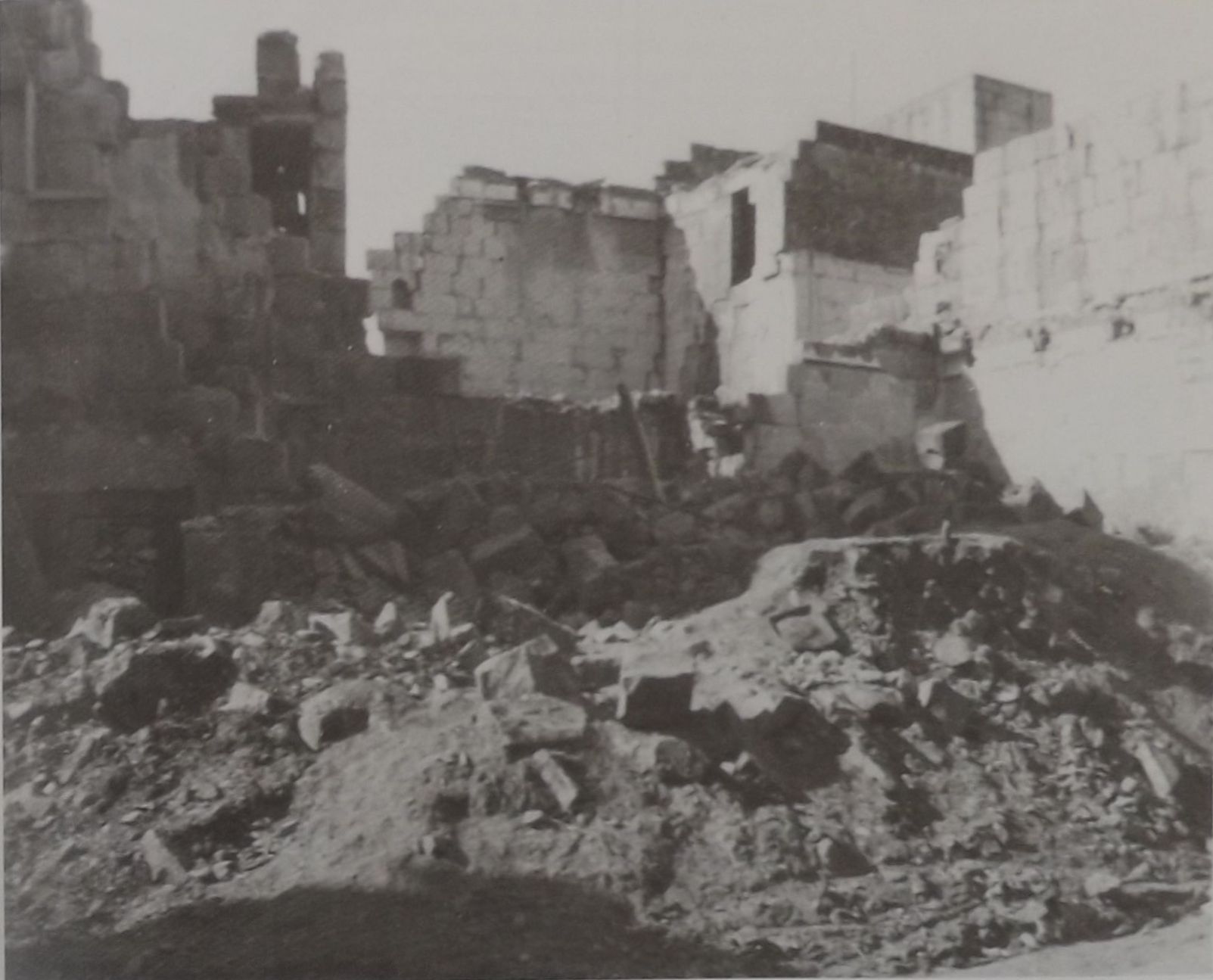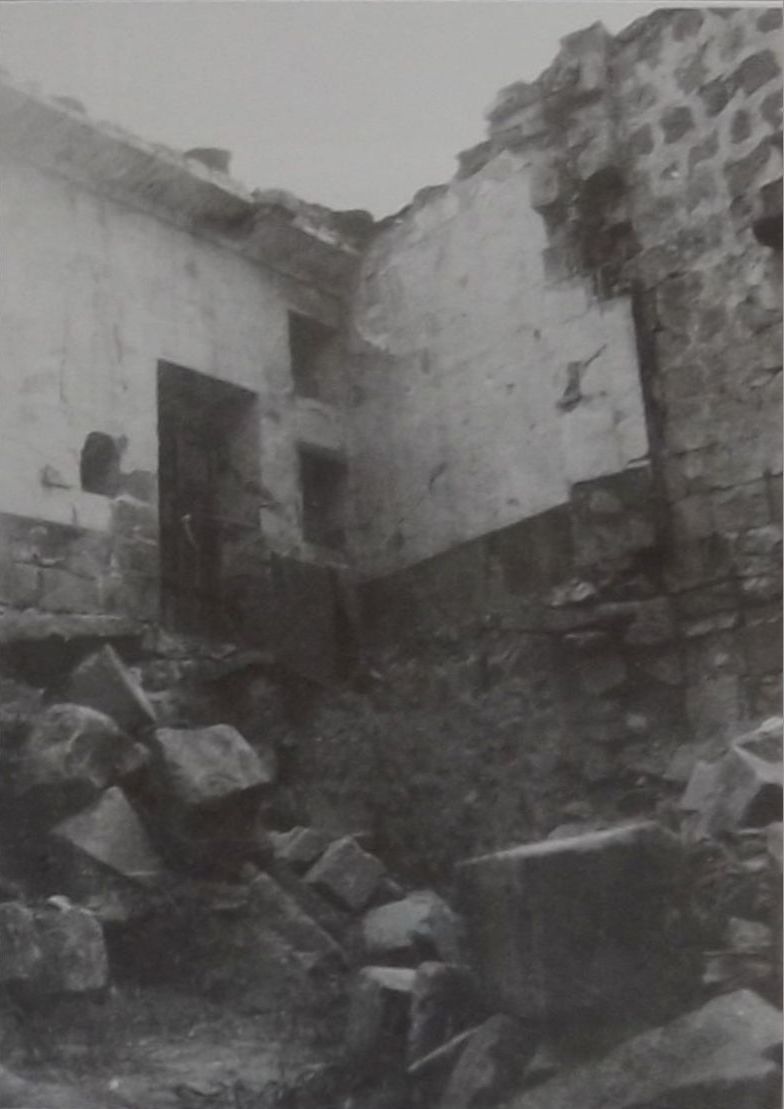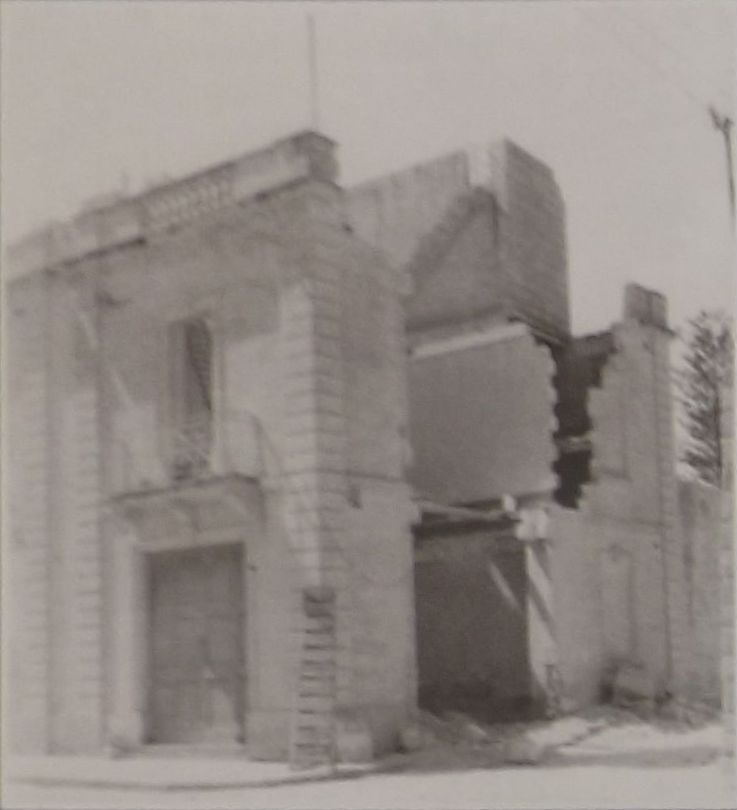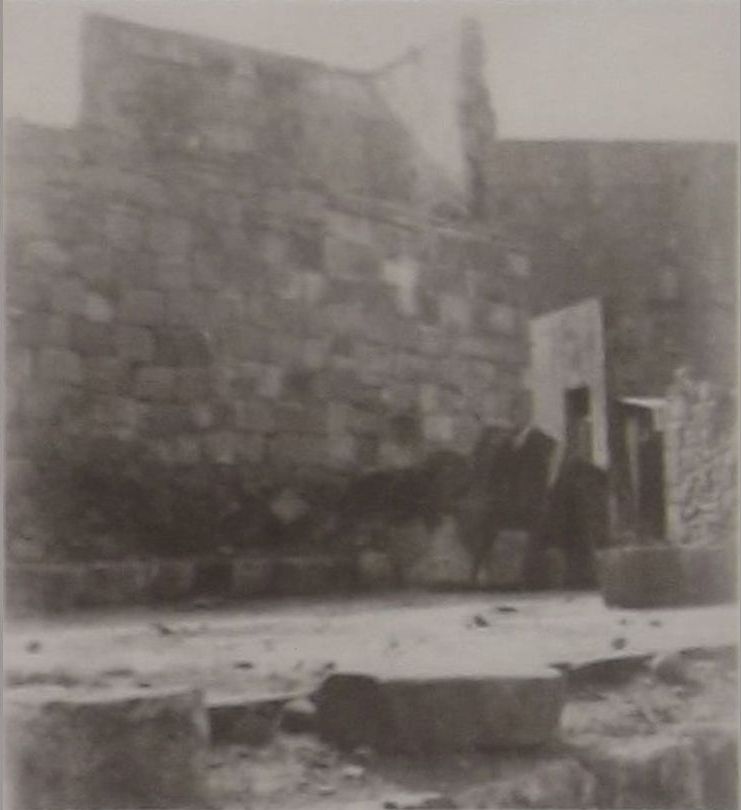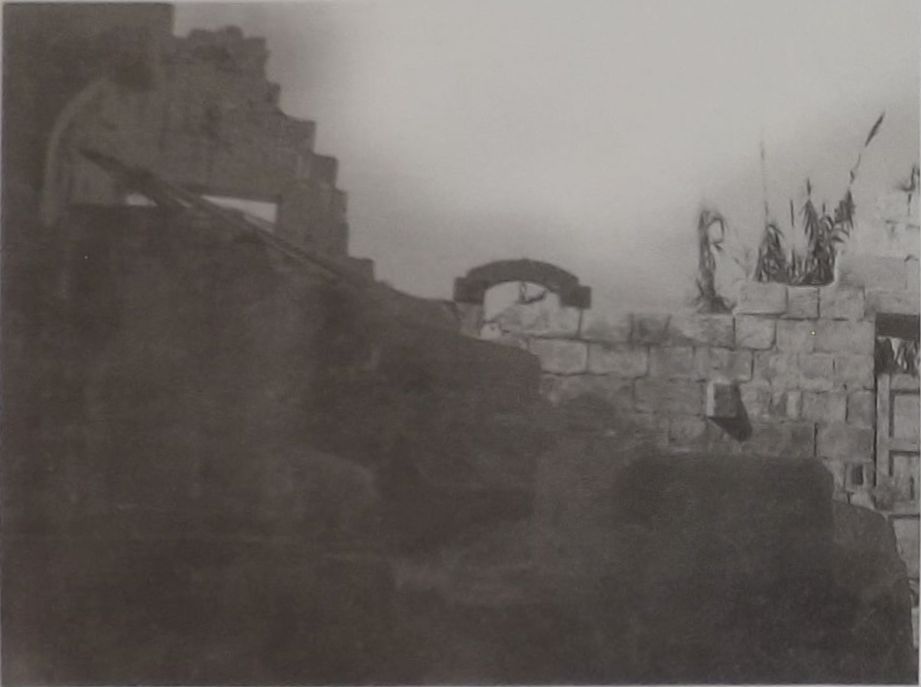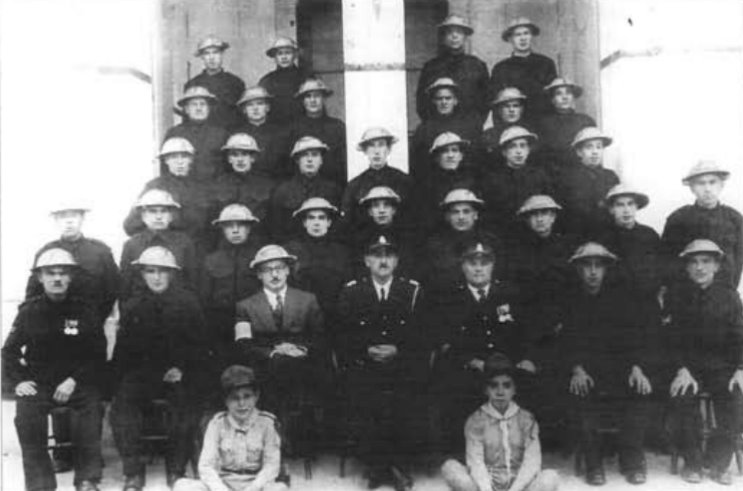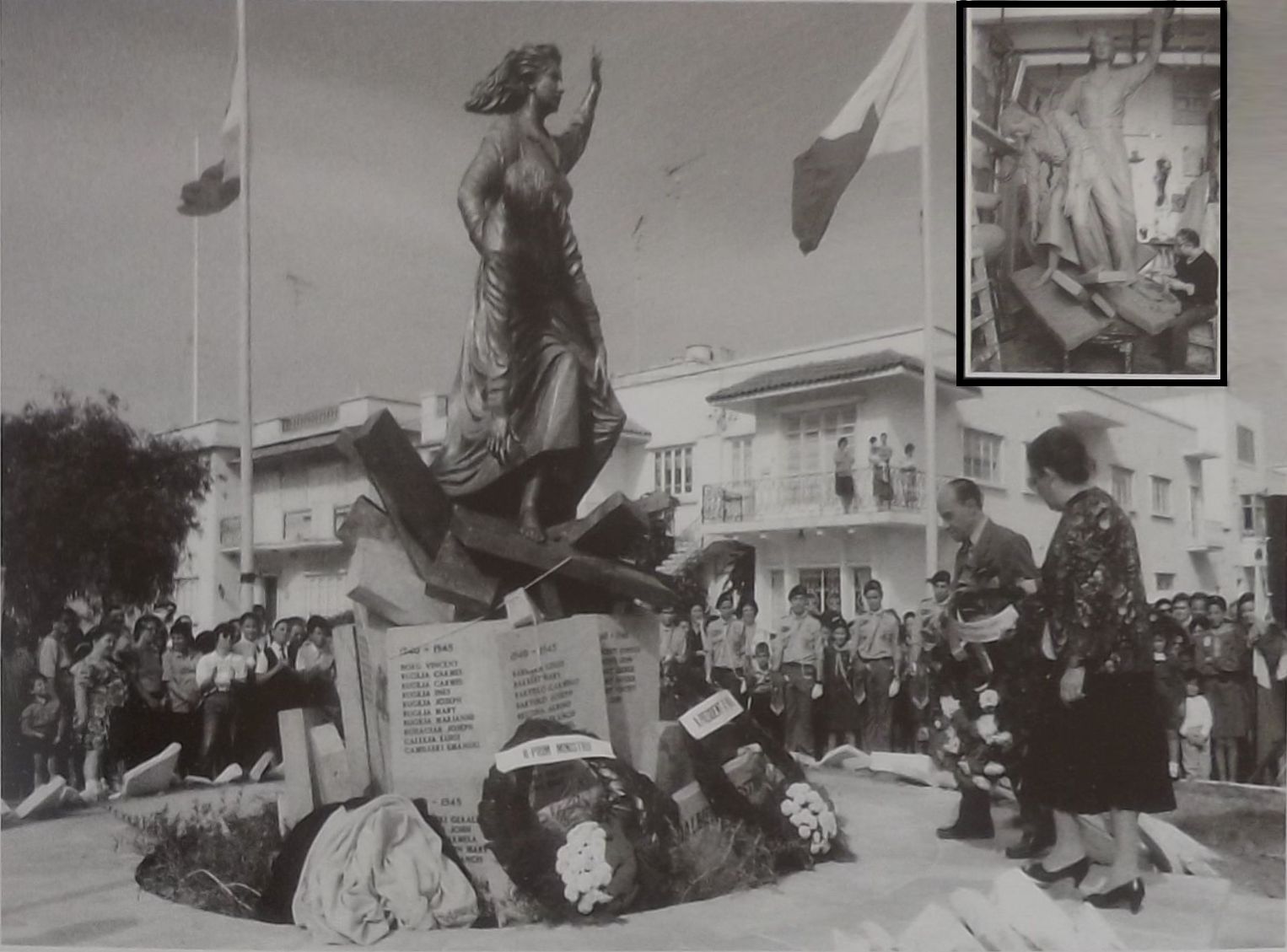
Malta At War: Volume V
by John A. Mizzi and Mark Anthony Vella
This so very interesting book consisting of several volumes can be purchased from main bookstores or online. It narrates the ordeal Malta and its people faced in World War II complemented with many hundreds or even thousands of photos where there is barely a single page without 2 or more photos in it. This digital version covers only some articles mentioning Mosta and may contain differences from the original version due to problems while scanning which due to my limited resources didn't have time to verify completely and is another reason why one has to seek the original version when needs to quote references from it.
The miracle of the Mosta Rotunda
 A bomb similar to the one which penetrated the Mosta Dome, on display in the sacristy of the church, mounted against a background sculpture by Mosta-born Ganni Bonnici.
A bomb similar to the one which penetrated the Mosta Dome, on display in the sacristy of the church, mounted against a background sculpture by Mosta-born Ganni Bonnici.(p.1713) As the German bombers were returning to Sicily after dropping their bombs on the airfield of Luqa and the villages in its proximity, over 60 Ju88s and a dozen Ju87s were preparing to take off to attack Ta' Qali. With the bombers were two Jabo Me 109s of 10/JG 53 each carrying a number of small SD50 (110 lbs) bombs. One of the Ju88s from 3/KuFIGr606 and one of the fighter-bombers were to create the legend of the miracle of Mosta.
At the height of the attack at 4.40 p.m. an SC500 bomb went through the dome and bounced on the floor below without exploding and missing the worshippers attending the hour of adoration in the Chapel of the Holy Eucharist. Other smaller calibre bombs fell at the front and at the side of the church, one of these close to the altar of Saint Philomena, without exploding. Another unexploded bomb fell in the nearby garden of the residence of the sacristan, Carmelo Dimech.
Father Salvo Sammut recalled that there were some 300 parishioners inside the temple, scattered about the floor, and the majority had moved to the side walls as the attack increased in intensity. At one stage a woman picked up her chair and ran with it into the sacristy and others followed her. As Fr. Sammut himself left the confessional, several persons went up to him and asked for absolution. At that moment a bomb pierced the roof with a loud crash, grazed the corner of the lunette with the painting of Christ and the Apostles, chipping part of the stonework, hit the ground with a bang and rolled towards the pulpit, coming to rest underneath the twelfth station of the cross. Several boulders rained down to reveal a large hole in the ceiling.
 The village of Mosta dominated by the Rotunda in a pre-war photograph. The circle marks where the bomb pierced the dome.
The village of Mosta dominated by the Rotunda in a pre-war photograph. The circle marks where the bomb pierced the dome.The congregation scattered. None had been injured. Victor Delicata, in the confusion, ran in the direction of the bomb as he thought this was an old woman wearing the faldetta who needed help, then froze with fright when he saw it was a bomb and wanted to recite the act of contrition but could not remember it.
Those who tried to leave from the main door came upon an unexploded bomb on the parvis. This had hit the top corner of the left bell tower where a small group of boys who were under the large bell had the fright of their lives when the bomb passed a few feet away few feet away from them. Others tried to leave from the sacristy door and these found another small unexploded bomb outside. Some soldiers who (p.1714) had run inside the church thought the missile inside was a time bomb and shouted to those who had been too petrified to leave, to lie flat on the floor. The church, however, soon emptied. When the ARP Superintendent, Mr. Anthony Woods, arrived on the scene within minutes he saw four small bombs planted around it.
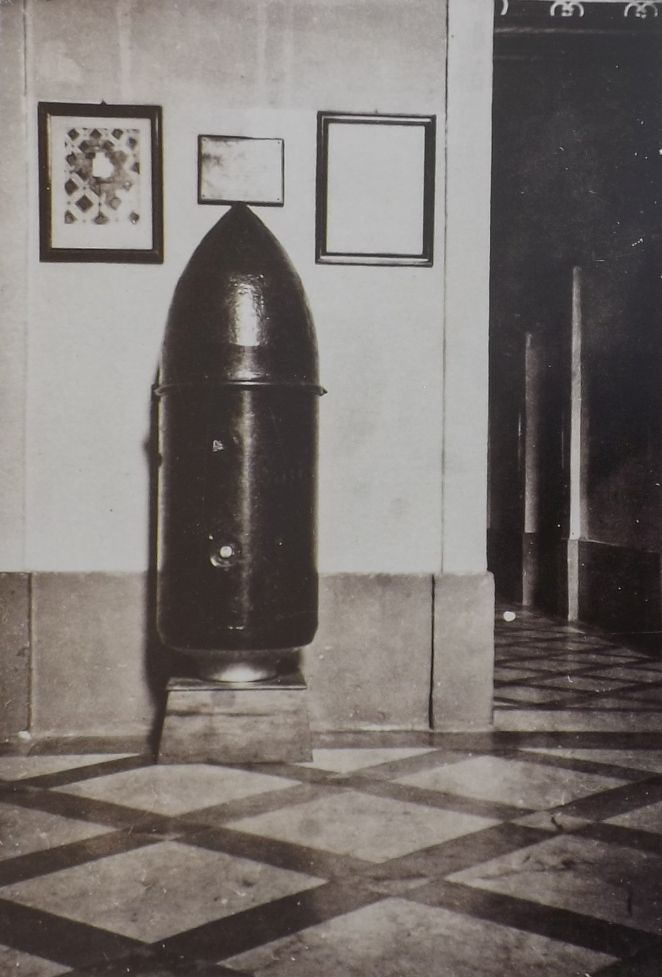 The SC500 bomb presented by the bomb disposal squad as originally displayed inside the church until 1992.
The SC500 bomb presented by the bomb disposal squad as originally displayed inside the church until 1992.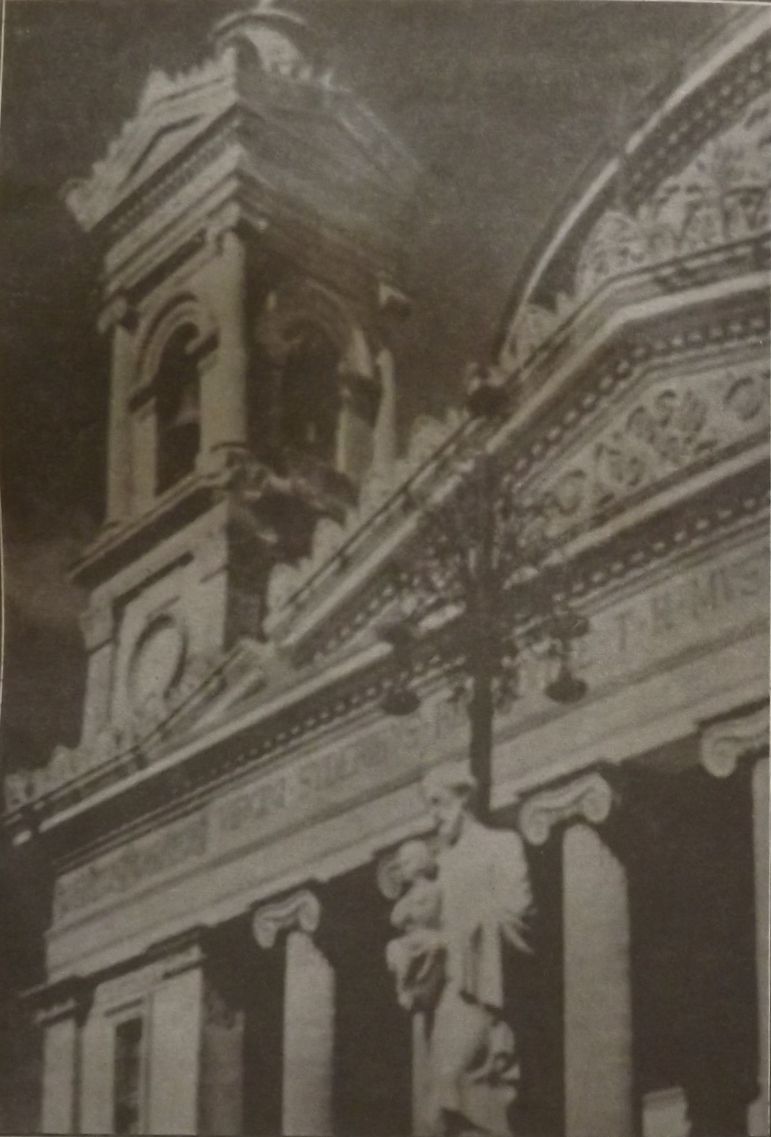
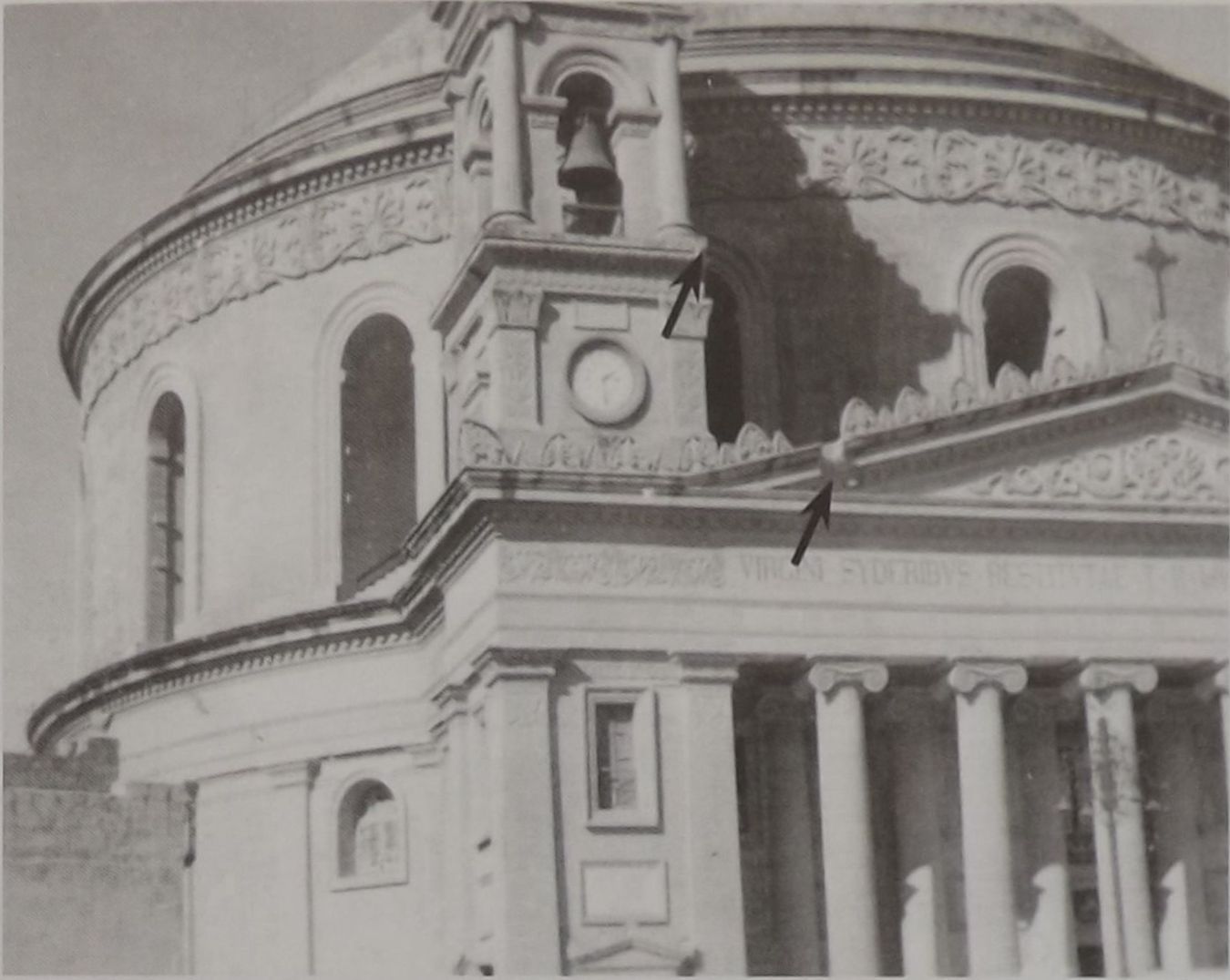 Photographs showing the bomb damage to the bell tower and frontispiece (arrowed) by a bomb dropped by a Me109 on April 9, 1942.
Photographs showing the bomb damage to the bell tower and frontispiece (arrowed) by a bomb dropped by a Me109 on April 9, 1942.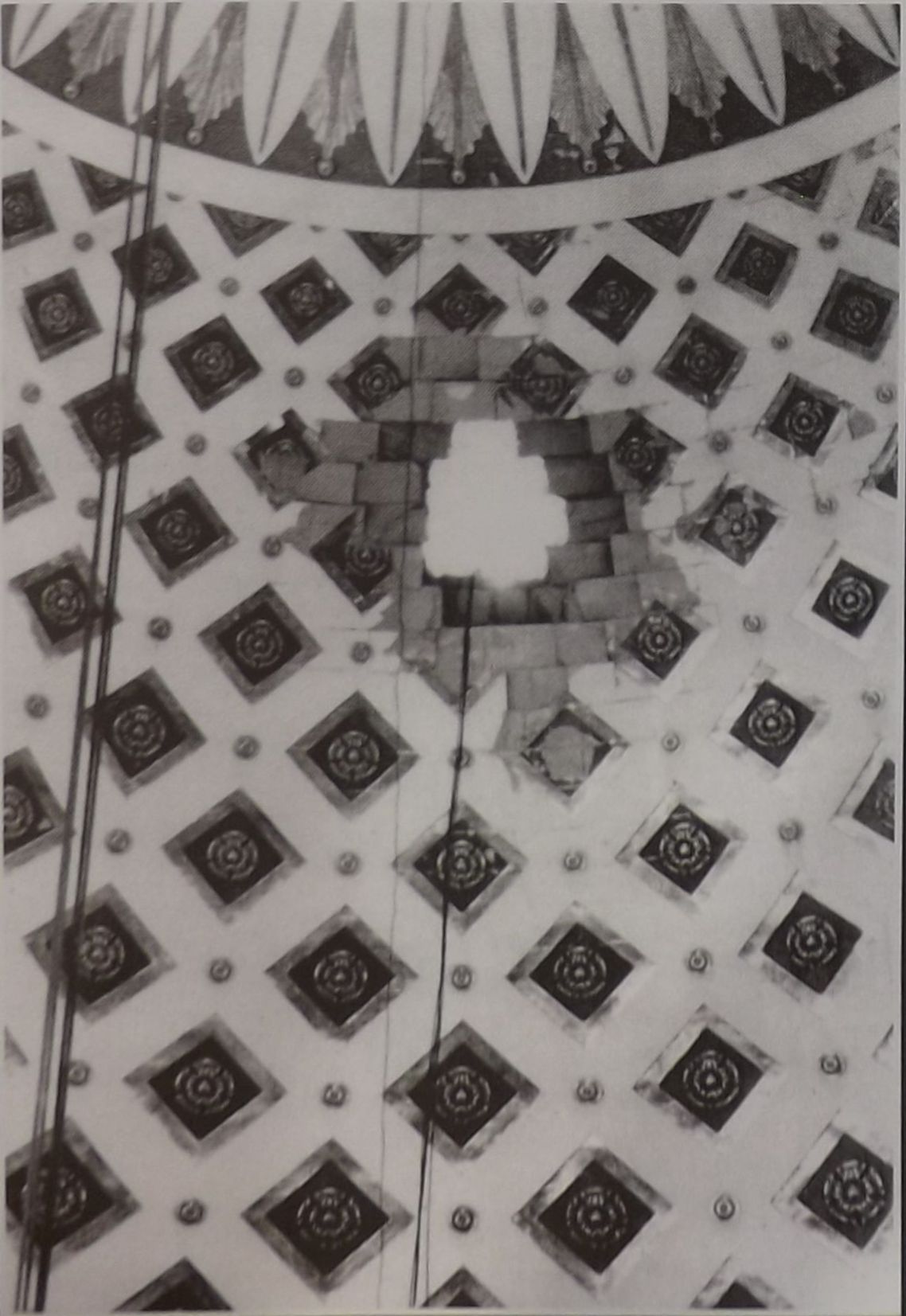 The hole in the dome made by the unexploded bomb.
The hole in the dome made by the unexploded bomb.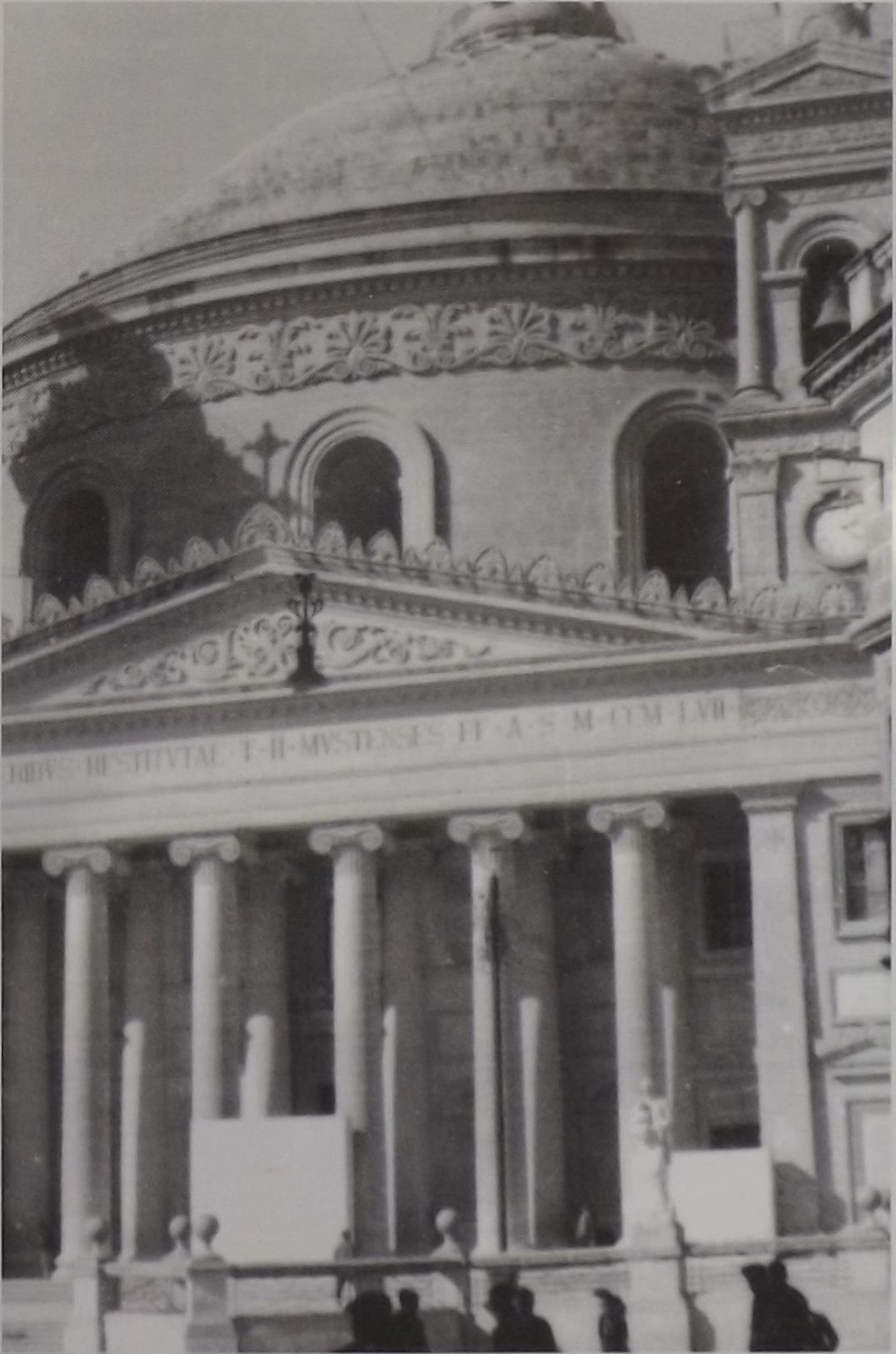 The entrance to the church was protected by blast walls.
The entrance to the church was protected by blast walls.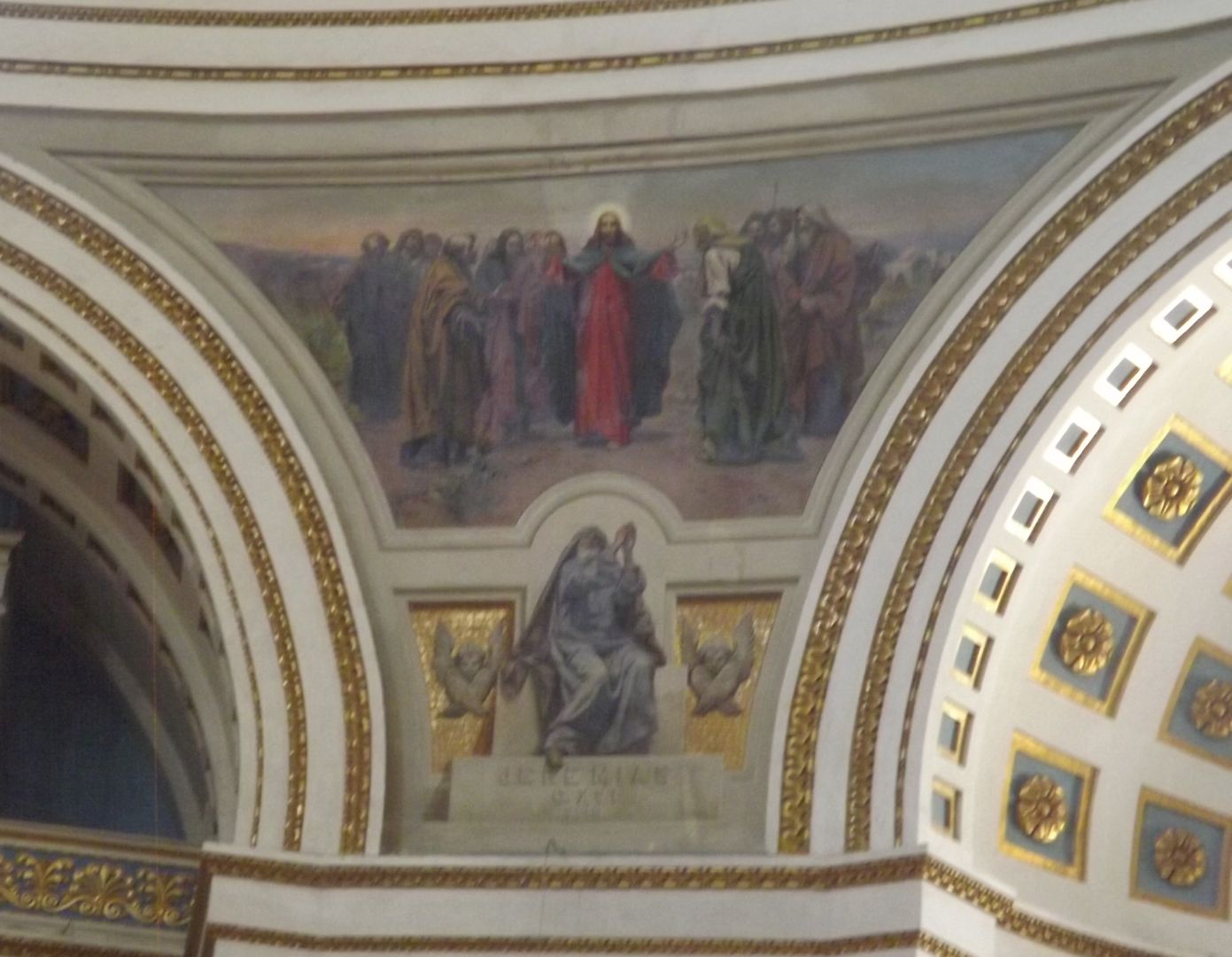 The painting by Giuseppe Cali of Christ and the Apostles above the entrance to the church which was hit by the bomb and the face of Christ was smashed and later repainted.
The painting by Giuseppe Cali of Christ and the Apostles above the entrance to the church which was hit by the bomb and the face of Christ was smashed and later repainted.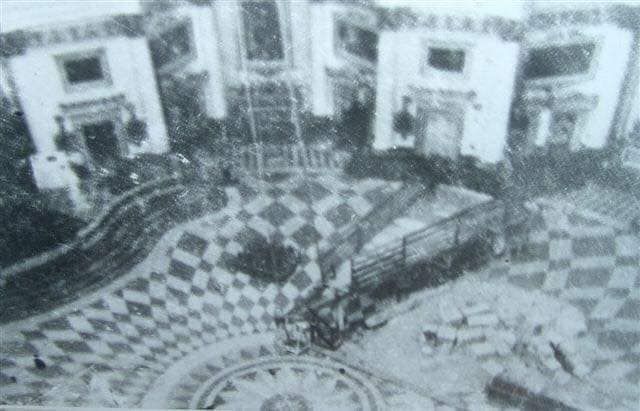 The boulders which fell from the dome can be seen to the right of the scaffolding being prepared to temporarily cover the open hole.
The boulders which fell from the dome can be seen to the right of the scaffolding being prepared to temporarily cover the open hole.A bomb disposal squad under Lieut. T.W.T. Blackwell, who included Corporal “Busty" Brewer, Lance Corporal “Rosy” Hillier, and Sapper C.E. Reeves and Sapper W.D. Scott, defused the bomb inside the church. A small boy was sent by his mother with cups of tea and he asked - and was allowed - to sit on the bomb.
Scott recalled the plank broke when the bomb was being pushed down the church steps onto the truck and this rolled down and knocked over a lamp-post. All the bombs were removed to the Royal Engineers dump at Lintorn Barracks, Floriana, and later disposed of in the sea from the cliffs at Hal Far. An identical bomb was found in the dump at Floriana and presented to the village band at the request of some parishioners on April 18 when the sappers were entertained to a meal and drinks at the Nicolo Isouard Band Club. Scott wrote in his diary: “Where they got the food from I don’t know; also plenty of Farsons Blues, went down wonderful, we all got well and truly drunk.”
I dropped bombs over Mosta
 Vögerl, explaining to Stephen A. Petroni and the editors of Malta at War, how his aircraft took evasive action while flying over Mosta and released its bomb. He is wearing the Knight’s Cross.
Vögerl, explaining to Stephen A. Petroni and the editors of Malta at War, how his aircraft took evasive action while flying over Mosta and released its bomb. He is wearing the Knight’s Cross.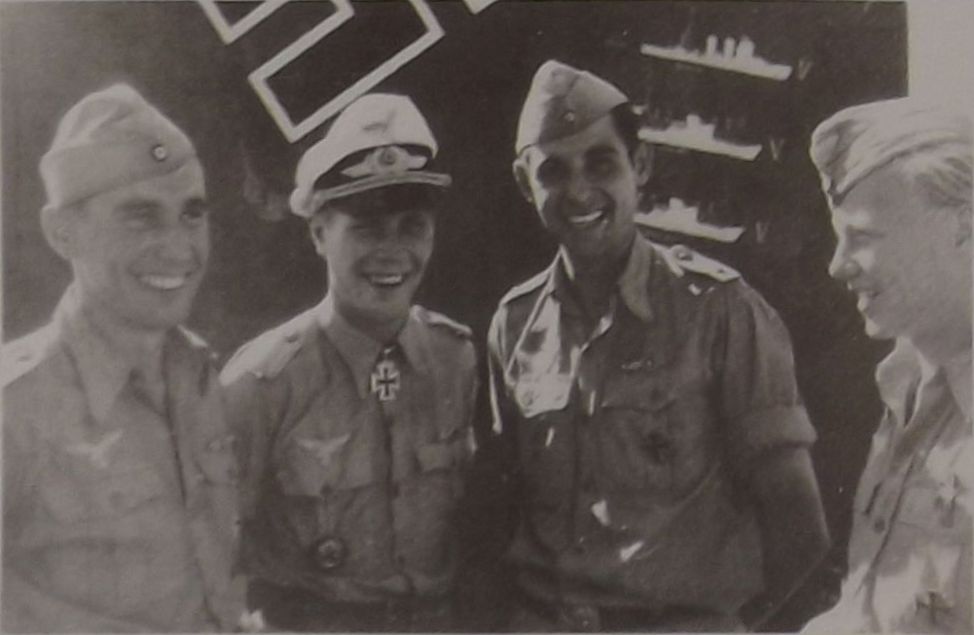 Georg Vögerl (right) together with bomber pilot Car-Heinz Grove, wearing the Knight’s Cross and the rest of the crew of the Ju88.
Georg Vögerl (right) together with bomber pilot Car-Heinz Grove, wearing the Knight’s Cross and the rest of the crew of the Ju88. A Ju88 leaving Malta after a raid. Inset: The emblem of KüFlGr606.
A Ju88 leaving Malta after a raid. Inset: The emblem of KüFlGr606.(p.1716) In August 2003 one of the veterans attending the 60th anniversary reunion of the Santa Maria convoy was Leutnant Georg Vögerl, 82. He visited the Rotunda after learning that a bomb had penetrated the roof and failed to explode. He recalled that one afternoon in early April 1942 he was flying a Ju88 of 3/KuFlGr 606 attacking Ta' Qali and he was forced to release his bombs, which had not yet been fused, over Mosta.
Two weeks later, he made his 100th combat flight.
In July, Vögerl’s bomber came under heavy antiaircraft fire during another raid on Malta. They were flying south towards "a little island" which he did not remember seeing on his map, but which served as a marker for the flight back to Sicily. As his Ju88 flew over the islet it was attacked by a Hurricane which set fire to its port engine. The bomber became difficult to maneuver and the crew threw out whatever they could to lighten the aircraft to make it back to Sicily: parachutes, machine-guns and other equipment. They crash-landed on their return to their airfield. Vögerl remembered the small island when he visited the Blue Grotto in 2003 - it was Filfla.
Luftwaffe pilot remembers
 Sauer leans on his Me109 which displays the emblem of 10/JG53, a bomb centering Malta.
Sauer leans on his Me109 which displays the emblem of 10/JG53, a bomb centering Malta.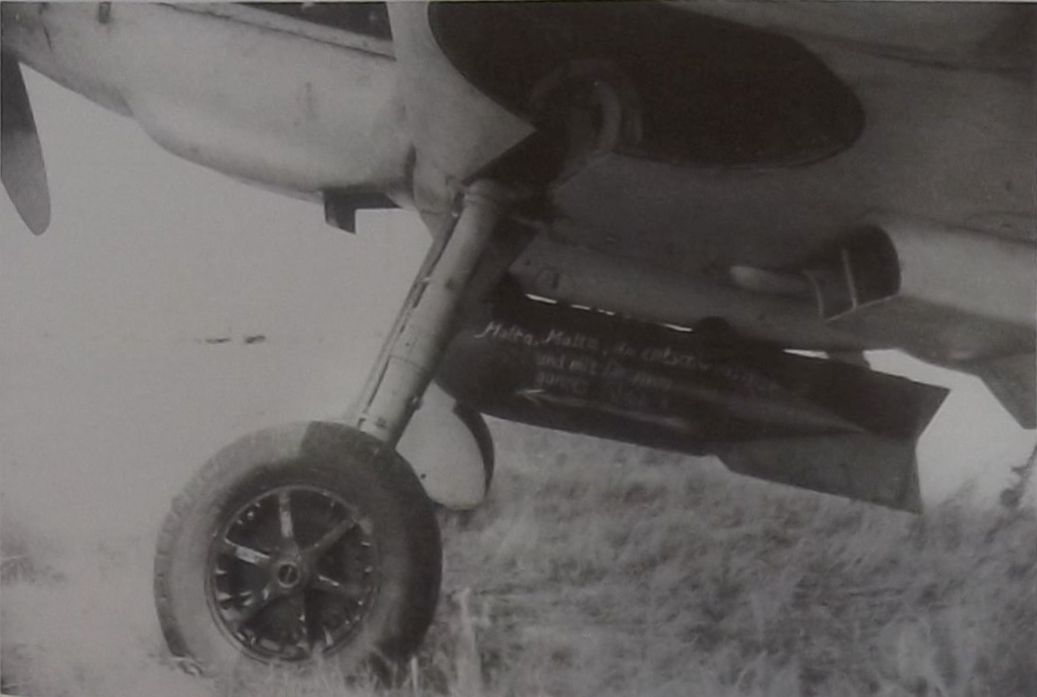 The bomb slung under an Me109 carries the message in German, “Malta, Malta, you are disappearing and with you goes all my fortune.”.
The bomb slung under an Me109 carries the message in German, “Malta, Malta, you are disappearing and with you goes all my fortune.”.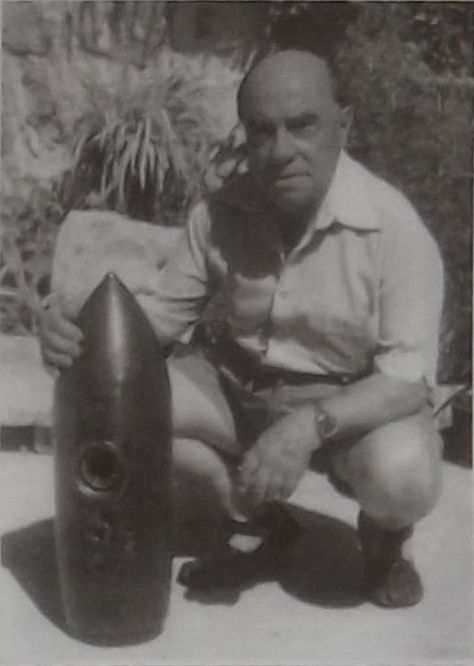 Charles J. Vella with one of the bombs dropped by the fighter-bombers on Mosta on April, 1942. This was found in the garden of the residence of the sacristan Carmelo Dimech, close to the church, and left behind by the bomb disposal squad after it was defused (actually was not left behind, but had been found years later in 1948). It has changed ownership a number of times and was here on display at a section on the Second World War organized by Mr. Vella as part of an exhibition on Mosta Past and Present in September 2008.
Charles J. Vella with one of the bombs dropped by the fighter-bombers on Mosta on April, 1942. This was found in the garden of the residence of the sacristan Carmelo Dimech, close to the church, and left behind by the bomb disposal squad after it was defused (actually was not left behind, but had been found years later in 1948). It has changed ownership a number of times and was here on display at a section on the Second World War organized by Mr. Vella as part of an exhibition on Mosta Past and Present in September 2008.(p.1717) When Felix Sauer visited Malta in 1975 he was relieved to learn that the bomb on Mosta church had not exploded, he told the congregation inside the Rotunda during Sunday Mass on May 15, 1988 while on a second visit when he led a small delegation from his hometown of Julich which included Fr. Bernard Bongard, the provost of the church of the Assumption. He said that as a Catholic he had been troubled by the thought that the church has been destroyed.
In an interview in the Times of Malta of May 15, 1988, and again in l-Orizzont of May 30, 1990 he said that he and a fellow pilot named Scheffl, both flying Messerschmitts, flew to Malta on April 9. 1942 on a bombing mission over Grand Harbour. They took off from Comiso and skimmed the sea to fox the island’s radar and very low when over land to evade the heavy flak ... but even so the intensive air defences drove them away from their intended target and, while flying over Mosta, he saw his partner jettison his bomb. Next he saw what he described as a jet of flame and dust coming from the dome. It was an unhappy memory which lingered long in his mind...
His companion, he said, failed to return to Sicily and is believed to have ditched his plane off Sliema. He pointed out that the bomb on display at Mosta church could not have been the one which pierced the dome since it would have been too heavy for an Me 109 to carry.
Sauer was inaccurate in his recollections. The bomb which had pierced the dome had been jettisoned by a Ju88 and like the small bombs dropped by the Me 109 had not exploded. In April 1994, Anthony Camilleri, in his research for his book in Maltese Il-Hbit mill-Ajru fuq ir-Rotunda tal-Mosta, was able to trace Franz Scheffl in Dorndorf, in the state of Thuringia, which had been part of East Germany till 1990. Scheffl, then aged 76, in his letter to Camilleri wrote: “On April 9, 1942 I was involved in an air battle over Malta with two Spitfires. During this fight my aircraft was damaged but I was able to reach my base at Comiso.” Scheffl, according to the Luftwaffe records, crashed on July 14, 1942 while landing at the airfield at Sanyet-Quataifya in Libya and sustained a severe back injury: he was only able to return to service the following November. The records of 10/JG 53 do not record the loss of any fighter on April 9, 1942. Sauer's memory was at fault.
Photo: Charles J. Vella with one of the bombs dropped by the fighter-bombers on Mosta on April, 1942. This was found in the garden of the residence of the sacristan Carmelo Dimech, close to the church, and left behind by the bomb disposal squad after it was defused (actually was not left behind, but had been found years later in 1948). It has changed ownership a number of times and was here on display at a section on the Second World War organized by Mr. Vella as part of an exhibition on Mosta Past and Present in September 2008.
Governor sees bomb inside church
(p.1720) In the Spring of 1942, I was one afternoon watching the progress of an air raid and whilst so doing I saw a bomb actually strike the dome of the Mosta church. Knowing how deeply attached the people of Mosta were to their church, I was deeply distressed and went round to Mosta to see for myself what had happened. I expected to see a great scene of desolation, but to my great relief, on arriving, l saw the church apparently intact. I went in and then I saw lying on the marble floor of the church an enormous bomb (I was told later that it weighed 1100 lbs). I looked up and saw that a neat hole had been bored in the dome. The bomb after boring this thick hole through the masonry of the dome had fallen perhaps 200 feet on to the hard marble and had not gone off. It had done no more than dent the floor. If it had gone off, there is no doubt that all the walls of the church would have collapsed on the ruins. It is also extremely probable that the many people sheltering in the crypt underneath would have been killed. The bomb was rendered harmless as soon as possible and the people of Mosta breathed freely again. To say that they were greatly relieved was a gross understatement. But their thankfulness was tinged with gratitude to Almighty God, whose intervention they saw in the incident. And they said. “It is a miracle!" We cannot but agree with them.
William Dobbie
A Very Present Help, 1944.
Some photos of World War II bomb damage in Mosta
(click on photo to see larger image)
 (p.1721) Buildings in Bridge Street Nos. 140-143. The Statue of St. Paul (actually it is Saint Thomas) perched on the roof remained standing as it still is to date.
(p.1721) Buildings in Bridge Street Nos. 140-143. The Statue of St. Paul (actually it is Saint Thomas) perched on the roof remained standing as it still is to date.
 (p.1723) Nos. 1, 2 and 3, Curate Schembri Street, behind the Rotunda. The remains of a burnt out car lie in the corner.
(p.1723) Nos. 1, 2 and 3, Curate Schembri Street, behind the Rotunda. The remains of a burnt out car lie in the corner.
 (p.1724) St. Anthony Street Nos. 162, 163 and 164 with a jerry-can near a public fountain partly visible and a wash basin in the middle of the street.
(p.1724) St. Anthony Street Nos. 162, 163 and 164 with a jerry-can near a public fountain partly visible and a wash basin in the middle of the street.
 (p.1726) Cartoon by Alfred Gerada in Il-Berqa of April 24, 1942 – the bomb hole is on the wrong side.
(p.1726) Cartoon by Alfred Gerada in Il-Berqa of April 24, 1942 – the bomb hole is on the wrong side.

